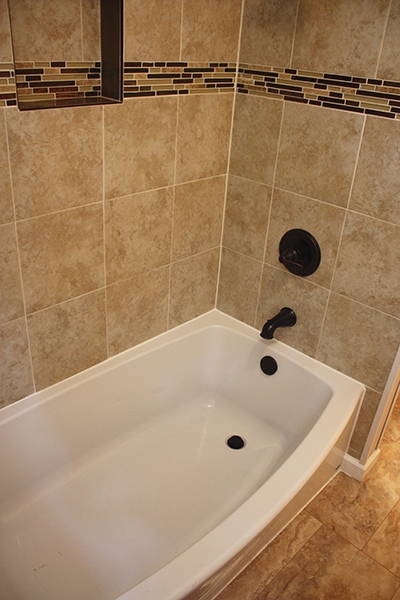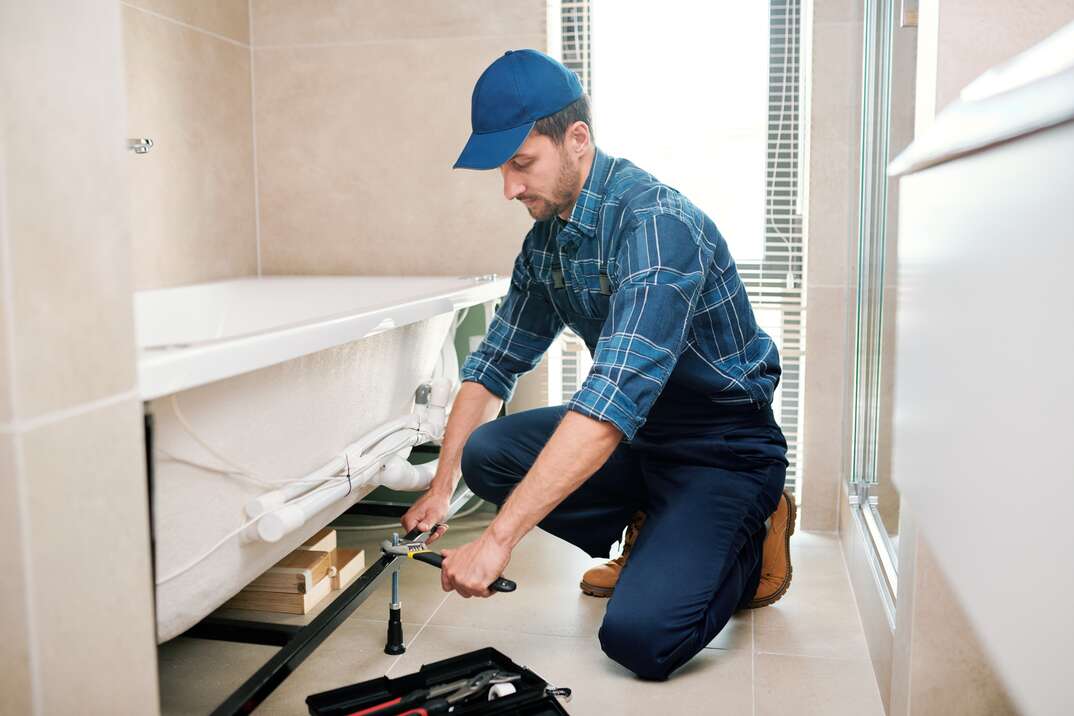Plumbing 101: Tips for Installing a Bathtub
Plumbing 101: Tips for Installing a Bathtub
Blog Article
This great article down below in relation to Tools You Need to Install a New Bathtub is totally engaging. You should check it out.

Mounting a bath tub isn't exactly brain surgery, however it does require strong plumbing, carpentry, and also sometimes, tiling abilities. Changing an old bathtub with a new one is additionally a moderately hard project. If the old tub is conveniently obtainable, the project can move speedily; if you have to open up a wall to eliminate the old bathtub and also position the new bath tub, the task is a lot harder. In either instance, the job is within a home handyman's abilities, although you will certainly need an assistant to move out the old bathtub as well as embeded in the new one. Ensure you have qualified yourself for the task and also fit attempting it. Rather than hiring a service provider to take control of a halfway-completed project, it is better to take into consideration utilizing one before you start. Possibilities are you may require a specialist plumber to make tube links.
This post will certainly assist you install a brand-new tub in your shower room if you have currently acquired a new bathtub and also do not require to alter the arrangement of your previous water system pipes.
Your devices and product list must comprise the following:
Removing Old Taps
If you require to replace old taps with new ones as a part of your installment, after that the first thing you ought to do is separate the water. After doing so, switch on the taps to drain pipes any kind of water remaining in the system. The process of getting rid of the existing faucets can be fairly bothersome as a result of the limited access that is typically the instance.
Make use of a container wrench (crowsfoot spanner) or a tap tool to reverse the nut that links the supply pipelines to the taps. Have a cloth ready for the staying water that will certainly come from the pipelines. When the supply pipelines have actually been gotten rid of, use the same device to loosen the nut that holds the faucets onto the bath/basin. You will certainly need to stop the single faucets from transforming during this process. Once the taps have actually been gotten rid of, the holes in the bath/basin will certainly have to be cleaned of any kind of old sealing substance.
Before going on to fit the new faucets, contrast the pipe connections on the old faucets to the new faucets. If the old faucets are longer than the new taps, then a shank adapter is required for the brand-new taps to fit.
Fitting New Taps
If the tails of the new taps are plastic, then you will require a plastic connector to stop damage to the thread. One end of the connector fits on the plastic tail of the faucet and the various other end gives a connection to the existent supply pipelines.
If you need to fit a monobloc, after that you will certainly require decreasing couplers, which connects the 10mm pipeline of the monobloc to the conventional 15mm supply pipe.
Next off, place the faucet in the installing hole in the bath/basin making certain that the washers remain in area in between the tap and the sink. Protect the tap in position with the manufacturer given backnut. As soon as the tap is securely in position, the supply pipelines can be attached to the tails of the faucets. The taps can either be linked by utilizing corrugated copper piping or with normal tap connectors. The previous type must be linked to the tap finishes initially, tightening up only by hand. The supply pipelines can later on be connected to the various other end. Tighten up both ends with a spanner after both ends have been attached.
Installing the Bath tub
Using the two wood boards under its feet, position the bath tub in the called for position. The wood boards are valuable in evenly spreading out the weight of the bath tub over the area of the boards instead of concentrating all the weight onto four tiny factors.
The following objective is to make sure that the tub is leveled all round. This can be attained by checking the level and changing the feet on the bathtub till the level reads degree.
To install taps, fit all-time low of the outermost adaptable faucet adapter to the suitable supply pipeline by making a compression join; after that do the same for the other faucet.
Switch on the water system and inspect all joints and also new pipework for leaks and also tighten them if essential. Fill the tub and additionally check the overflow electrical outlet as well as the typical electrical outlet for leakages.
Lastly, take care of the bath paneling as described in the manufacturer's instruction manual. Tiling and also sealing around the bathtub should wait up until the bath tub has been made use of at the very least when as this will certainly settle it right into its last setting.
Preparing for the Installment
Firstly, the supporting frame provided with the bathroom should be fitted (if needed) according to the maker's guidelines. Next off, fit the faucets or mixer to the bath tub. When fitting the tap block, it is very important to ensure that if the faucet features a plastic washer, it is fitted in between the bathroom and also the faucets. On a plastic bath, it is additionally practical to fit a supporting plate under the faucets unit to avoid pressure on the tub.
Fit the adaptable faucet adapters to the bottom of the two faucets using 2 nuts and olives (sometimes supplied with the bathtub). Fit the plug-hole electrical outlet by smearing mastic filler round the sink outlet hole, and afterwards pass the outlet via the hole in the bathroom. Make use of the nut provided by the producer to fit the plug-hole. Examine the plug-hole electrical outlet for an inlet on the side for the overflow pipeline.
Next off, fit the end of the versatile overflow pipeline to the overflow electrical outlet. Afterwards, screw the pipe to the overflow face which should be fitted inside the bathroom. Make sure you make use of every one of the provided washing machines.
Link the trap to the bottom of the waste electrical outlet on the bath tub by winding the thread of the waste outlet with silicone mastic or PTFE tape, as well as screw on the trap to the outlet. Connect the bottom of the overflow tube in a similar manner.The bathroom should currently be ready to be suited its final position.
Tiling Around the Bath tub
In the location where the bathroom satisfies the tile, it is needed to seal the joins with a silicone rubber caulking. This is essential as the fitting can relocate enough to break a stiff seal, triggering the water to penetrate the wall in between the bath as well as the tiling, causing issues with wetness as well as feasible leakages to the ceiling listed below.
You can choose from a range of coloured sealers to blend in your components as well as fittings. They are offered in tubes as well as cartridges, and are capable of securing spaces approximately a size of 3mm (1/8 inch). If you have a bigger void to fill up, you can load it with twists of soaked newspaper or soft rope. Bear in mind to always load the bathtub with water prior to securing, to enable the motion experienced when the bathtub remains in use. The sealer can crack fairly early if you do not take into consideration this movement prior to sealing.
Conversely, ceramic coving or quadrant floor tiles can be used to border the bathroom or shower tray. Plastic strips of coving, which are easy to use and cut to dimension, are also quickly available on the market. It is a good idea to fit the floor tiles making use of water-resistant or waterproof sticky as well as cement.
Bathtub Installation
How Important Is A Bathtub To Your Home?
High-quality baths, showers, and other bathroom updates are necessary when considering a smart investment in your home. It’s a room that you go to every day and one that is constantly being used by guests.The bathroom is one of the top trafficked rooms in a home and also one of the most valuable in terms of home resale.
Install Piping Before Tub
You will be using your existing drain and waste vent system, but pipes required include the hot and cold water supply lines and a pipe leading to a shower head. A mixing valve and shower head are also needed. Air chambers may be required.
Position the Tub
Lower the tub into place so that the continuous flange fits against the wall studs and rests on 1’x4' or 2’x4' supports. Anchor the tub to the enclosure with nails or screws inserted through the flanges into the studs.
NOTE: Remember, bathtubs and shower stalls may require support framing. A bathtub filled with water is extremely heavy, so check building codes and framing support before installing the tub.
Assemble Drain Connections
Assemble the bathtub drain connections by connecting the tub overflow with the tub drain above the trap, not beyond it. The trap will have a compression fitting that screws over the arm of the overflow assembly.
Place a Pipe For the Shower Head
First, locate a brass female threaded winged fitting and attach it to a framing support via a screw or a nail. Then run a pipe up the wall for the shower head. Sweat or solder the other side of the brass fitting to the top of the pipe.
Attaching Hot and Cold Water Lines
Attach your water lines for both hot and cold by sweating these directly into the hot and cold ports of the mixing valve. The mixing valve will be how water enters the tub’s system, not by the pipes themselves.
Install the Spout
Extend a piece of 1/2 inch pipe, or whichever length is specified in the manufacturer’s instructions, for the tub spout. Sweat on a male threaded fitting at the end of the pipe or use a brass nipple of the proper length and a 1/2 inch cap.
NOTE: At this point you should have your rough-in plumbing work inspected before proceeding further.
Check For Leaks
Restore the water pressure and check the drain connection and the supply pipes for any sign of leaking.
estore the Bathroom Wall
Replace the wall with moisture-resistant drywall as a base for your wall covering. Seal the joints between the wall and your new tub with silicone caulk as protection against water seepage.
https://www.berkeys.com/2016/12/02/bathtub-installation-dallas/

I'm certainly very intrigued by Tools You Need to Install a New Bathtub and I'm hoping you liked the new post. Are you aware of anybody else who is fascinated by Tools You Need to Install a New Bathtub ? Why not share it. Thanks for your time. Kindly check up our website back soon.
Toilet overflow? Call us! Report this page